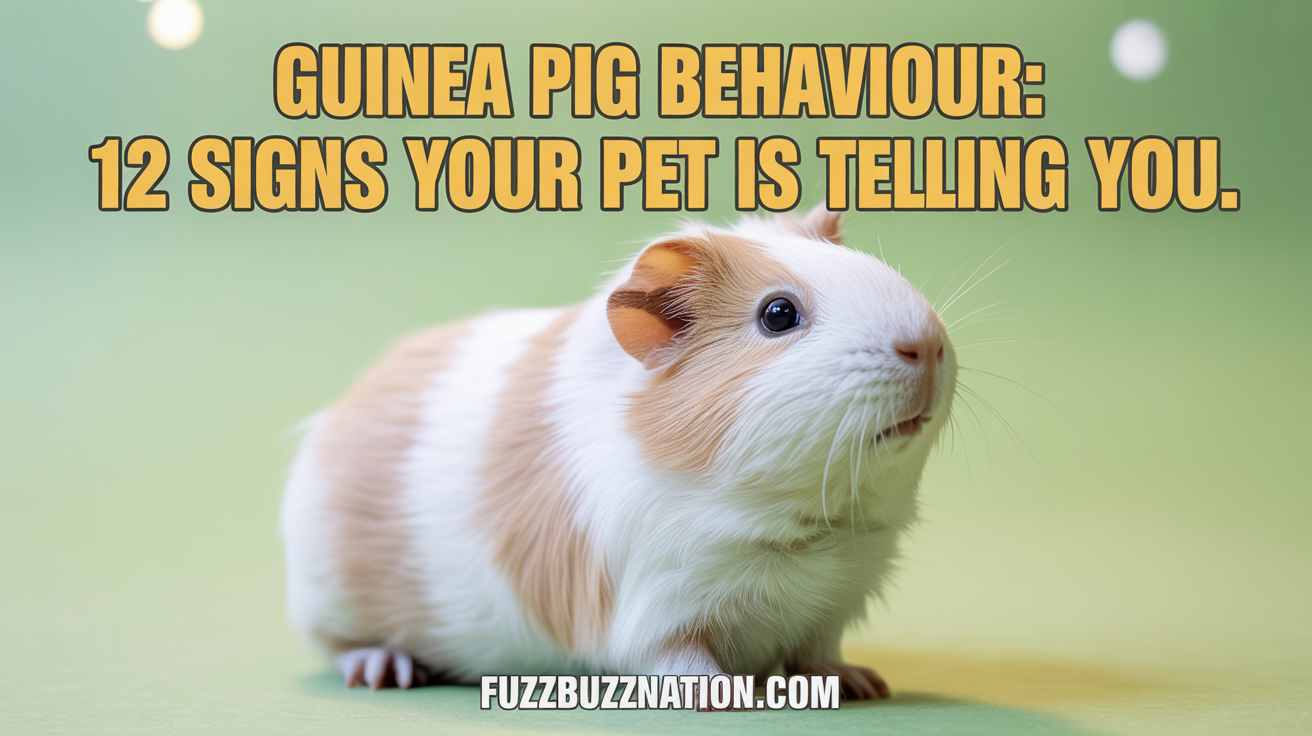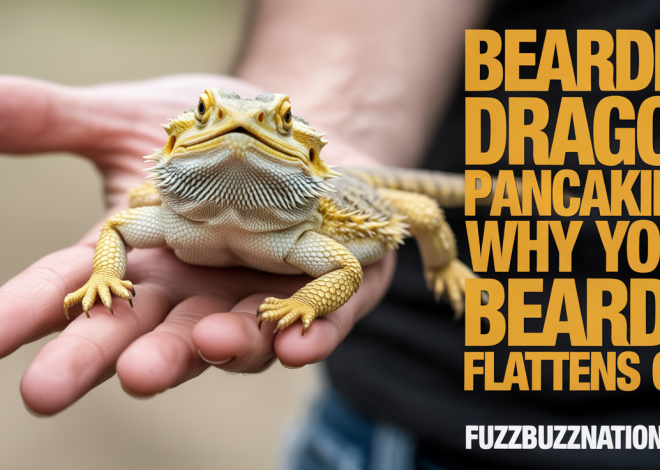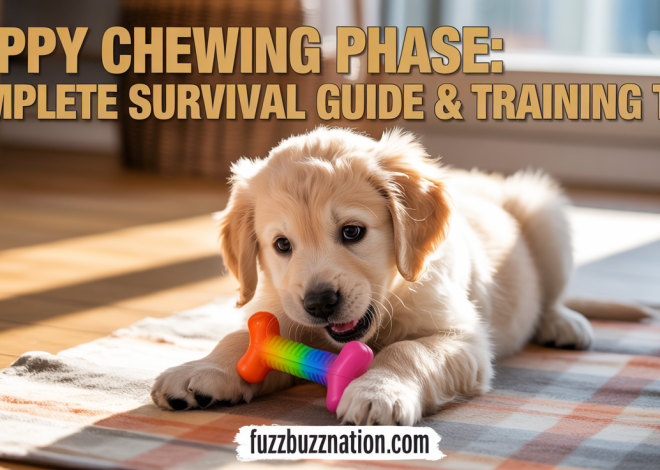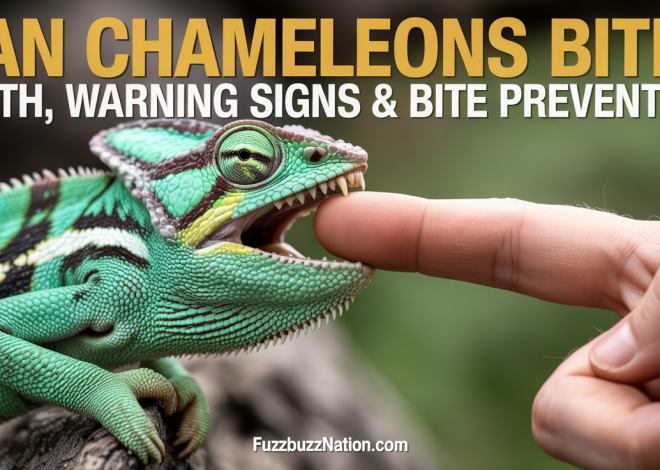
Guinea Pig Behaviour: 12 Signs Your Pet Is Telling You
Guinea pig behaviour ranges from adorable popcorning (joyful jumping) when happy to teeth chattering when annoyed or threatened. Understanding these behaviours helps you recognise whether your guinea pig is content, establishing dominance, feeling unwell, or needs immediate intervention. Most guinea pig behaviours serve specific communication purposes, from the excited “wheek” when they hear the fridge door to the warning rumble-strut that precedes territorial disputes.
Learning to read guinea pig behaviour isn’t just about satisfying curiosity—it’s essential for providing proper care and preventing serious problems. A guinea pig that suddenly stops exhibiting normal behaviours like popcorning or becomes unusually aggressive might be signalling health issues that require veterinary attention. Conversely, understanding normal dominance behaviours prevents unnecessary panic when your guinea pigs are simply establishing their social hierarchy.
The Joyful Behaviour That Looks Like a Medical Emergency (But Isn’t)
Popcorning represents the ultimate expression of guinea pig happiness, yet first-time owners often panic when they witness this behaviour. During popcorning, guinea pigs suddenly leap into the air, sometimes twisting their bodies mid-flight, bucking like tiny broncos, or performing 180-degree turns before landing and dashing off in another direction. The name perfectly captures the behaviour—guinea pigs literally look like popcorn kernels bouncing in a hot pan.
Young guinea pigs popcorn more frequently and dramatically than adults, often incorporating multiple jumps into running sequences or performing elaborate aerial acrobatics. Adult guinea pigs typically exhibit more subtle popcorning, with smaller jumps or quick head flicks that might be missed if you’re not watching carefully. However, even senior guinea pigs can surprise their owners with enthusiastic popcorning sessions when particularly excited.
Popcorning triggers include anticipation of favourite foods, introduction of new toys or hideouts, freedom during floor time, comfortable environmental conditions, and social excitement when joining other guinea pigs. Some guinea pigs popcorn when their owners return home or during particularly engaging play sessions, demonstrating their capacity for emotional responses to human interaction.
The behaviour is completely instinctive and cannot be taught or forced. Guinea pigs that never popcorn may still be perfectly happy—individual personality differences mean some express joy more physically than others. However, a guinea pig that previously popcorned regularly but suddenly stops might be experiencing health issues, stress, or environmental problems that deserve investigation.
Decoding the “Wheek”: Why Your Guinea Pig Sounds Like a Squeaky Toy
The iconic “wheek” represents guinea pigs’ most recognisable vocalisation, a high-pitched squeal that can range from soft whistles to ear-piercing shrieks depending on the context. This behaviour serves multiple communication purposes, from expressing excitement to demanding attention, and understanding the subtle variations helps owners respond appropriately to their guinea pigs’ needs.
Food-related wheeking typically occurs when guinea pigs hear familiar sounds associated with feeding time: the rustle of vegetable bags, opening of the refrigerator, or footsteps approaching their cage. This anticipatory behaviour demonstrates their intelligence and associative learning abilities, as they quickly learn to recognise feeding routines and express their excitement vocally.
The pitch, duration, and intensity of wheeks provide important behavioural clues. Soft, short wheeks often indicate contentment or mild interest, while prolonged, high-pitched wheeks suggest strong excitement or urgency. Extremely loud or desperate-sounding wheeks might indicate distress, pain, or territorial disputes requiring immediate attention.
Guinea pigs also wheek to seek social interaction, often becoming more vocal when they hear their owners’ voices or when separated from companion guinea pigs. This behaviour reinforces their social nature and need for regular interaction, whether with humans or other guinea pigs. Solitary guinea pigs often develop more pronounced wheeking behaviours as they attempt to fulfil their social communication needs.
The Rumble-Strut: Dominance Display or Mating Ritual?
Rumble-strutting combines vocalisation with distinctive body language to create one of guinea pigs’ most recognisable dominance behaviours. During this behaviour, guinea pigs emit a low rumbling sound while swaying their bodies side-to-side, often with fur slightly puffed up to appear larger and more imposing. The swaggering walk resembles a confidence strut, earning this behaviour its descriptive name.
Male guinea pigs rumble-strut more frequently than females, particularly during adolescence between 6-18 months when establishing social hierarchies. The behaviour serves dual purposes: asserting dominance over other males and attracting females for mating. When directed at other males, rumble-strutting often precedes more serious dominance displays and can escalate if neither guinea pig backs down.
Females also rumble-strut, particularly when in season or establishing dominance with other females. Female rumble-strutting tends to be less dramatic than male displays but serves similar social functions of establishing hierarchy and communicating reproductive readiness. Understanding gender differences in rumble-strutting helps owners interpret the behaviour correctly.
Context is crucial for interpreting rumble-strutting behaviour. Gentle rumble-strutting in established groups is normal and doesn’t require intervention. However, intense rumble-strutting accompanied by aggressive body language, teeth chattering, or actual fighting might indicate serious dominance disputes requiring careful monitoring or separation.
Teeth Chattering: The Ultimate Warning Signal You Can’t Ignore
Teeth chattering represents guinea pigs’ clearest expression of annoyance, frustration, or aggression, created by rapidly clicking their teeth together in a distinctive sound that demands immediate respect. This behaviour serves as both warning and threat, communicating that the guinea pig wants space and may escalate to biting if the message is ignored.
The intensity of teeth chattering varies significantly based on the guinea pig’s emotional state and the severity of the perceived threat. Soft, quiet chattering might indicate mild irritation or impatience—such as when waiting for food or during gentle grooming sessions. Loud, aggressive chattering accompanied by bared teeth and defensive posturing signals serious displeasure and potential aggression.
Guinea pigs chatter their teeth at both humans and other guinea pigs, making this behaviour relevant for all types of social interaction. When directed at humans, teeth chattering often occurs during handling, nail trimming, or other activities the guinea pig finds unpleasant. Respecting this communication by giving the guinea pig space can prevent escalation to biting.
Inter-guinea pig teeth chattering frequently occurs during introductions, territorial disputes, or resource competition. While some mild chattering is normal during hierarchy establishment, persistent or escalating chattering between housed guinea pigs might indicate compatibility problems requiring intervention or separation.
When Freezing Behaviour Signals Danger (And When It’s Normal)
Freezing behaviour represents guinea pigs’ primary prey animal response to perceived threats, causing them to become completely motionless while assessing potential danger. This behaviour is deeply ingrained in their survival instincts and can be triggered by various stimuli, from sudden noises to unfamiliar scents or movements.
During freezing episodes, guinea pigs typically remain statue-still for several seconds to minutes, often with wide eyes and ears perked forward to gather maximum sensory information. This behaviour may be accompanied by a brief rumbling sound that alerts other guinea pigs to the potential threat. After the perceived danger passes, guinea pigs usually resume normal activities or may bolt to nearby hiding places.
Common triggers for freezing behaviour include sudden loud noises, unexpected movements, unfamiliar people or animals, new environments, and changes in lighting or shadows. Understanding these triggers helps owners create more secure environments and avoid accidentally frightening their guinea pigs during routine care activities.
While freezing is normal prey behaviour, excessive or prolonged freezing might indicate underlying stress, inadequate hiding places, or health problems affecting the guinea pig’s confidence. Guinea pigs that freeze frequently or for extended periods may benefit from environmental enrichment, additional hiding spots, or veterinary evaluation to rule out medical issues.
The Secret Language of Guinea Pig Grooming Behaviour
Guinea pig grooming behaviour extends far beyond simple hygiene maintenance, serving crucial social and emotional functions that provide insights into their wellbeing and relationships. Self-grooming represents normal behaviour that guinea pigs perform multiple times daily, using their teeth and claws to maintain their coats and remove debris.
Mutual grooming between bonded guinea pigs demonstrates affection and social bonding, typically involving gentle nibbling behind ears, on necks, or along flanks. This behaviour reinforces pair bonds and helps maintain group harmony, particularly important for guinea pigs’ social structure. Established pairs often engage in mutual grooming sessions, especially during relaxed periods or after stressful events.
Excessive grooming or barbering behaviour can indicate problems requiring attention. Guinea pigs that obsessively groom themselves might be experiencing stress, boredom, skin irritation, or underlying health issues. Barbering—where guinea pigs chew their own or others’ fur—often results from stress, inadequate nutrition, or environmental problems and may require veterinary intervention.
Over-grooming of cage mates sometimes develops in unbalanced social situations where one guinea pig becomes excessively dominant or anxious. This behaviour can lead to bald patches and skin irritation in the victim guinea pig, potentially requiring temporary separation while addressing underlying social dynamics.
Normal Play Fighting vs. Serious Aggression: Reading the Warning Signs
Distinguishing between normal dominance behaviour and serious aggression represents one of the most challenging aspects of guinea pig ownership, yet proper identification is crucial for maintaining group harmony and preventing injuries. Normal dominance behaviours include chasing, mounting, rumble-strutting, mild teeth chattering, and brief scuffles that quickly resolve when one guinea pig yields.
Play behaviour typically involves reciprocal interaction where guinea pigs take turns chasing each other, explore the same toys simultaneously, form “piggy trains” following each other around the enclosure, and make content purring or chutting sounds during interaction. These behaviours demonstrate positive social bonding and don’t require intervention.
Warning signs of serious aggression include continuous chasing that prevents one guinea pig from accessing food or water, drawing blood through biting, loud aggressive teeth chattering accompanied by lunging, sustained fighting lasting more than brief scuffles, and one guinea pig consistently preventing another from using hiding places or resources.
Environmental factors often influence the likelihood of serious aggression, including inadequate space, insufficient hiding places, resource competition, introduction of new guinea pigs, and health problems affecting individual guinea pigs’ behaviour. Addressing these factors can often prevent minor dominance displays from escalating into serious conflicts.
The Behaviour Changes That Scream “Vet Visit Required”
Certain behavioural changes in guinea pigs indicate potential health problems requiring prompt veterinary attention, as these prey animals instinctively hide signs of illness until conditions become severe. Understanding these warning behaviours helps owners provide timely medical intervention that can significantly impact treatment outcomes.
Sudden cessation of normal behaviours represents a critical warning sign, particularly when previously active guinea pigs become lethargic, stop popcorning, reduce vocalisation, or spend excessive time hiding. These changes often occur before obvious physical symptoms appear, making behavioural monitoring crucial for early disease detection.
Changes in eating and drinking behaviours frequently indicate health problems, including refusing favourite foods, difficulty chewing, selective eating, excessive drooling while eating, increased or decreased water consumption, and changes in treat acceptance. Guinea pigs’ high metabolic rates make eating interruptions potentially serious within 12-24 hours.
Abnormal respiratory behaviours require immediate veterinary attention, including laboured breathing, mouth breathing, unusual positioning while breathing, discharge from nose or eyes, and persistent coughing or sneezing. Respiratory infections can progress rapidly in guinea pigs and may prove fatal without prompt treatment.
Social Hierarchy: When Your Guinea Pigs Are Just Working Things Out
Guinea pig social hierarchies represent normal, necessary aspects of group living that owners must understand to avoid unnecessary interventions during natural social processes. Establishing dominance order typically takes 2-3 days in new groups but can continue intermittently throughout their relationships as circumstances change.
Normal hierarchy establishment includes rumble-strutting, mounting behaviour, chasing episodes that resolve quickly, mild teeth chattering during resource competition, and head-lifting displays to show dominance. These behaviours may seem concerning but represent healthy social communication that prevents more serious conflicts.
The hierarchy establishment process often intensifies during adolescence (6-18 months) when hormonal changes drive increased territorial behaviour. Male guinea pigs particularly exhibit pronounced dominance behaviours during this period, including increased marking, more frequent rumble-strutting, and heightened sensitivity to challenges from cage mates.
Understanding when hierarchy behaviours cross into problematic territory helps owners intervene appropriately. Intervention becomes necessary when one guinea pig cannot access food or water, continuous chasing prevents normal activities, fighting draws blood or causes injuries, weight loss occurs due to stress, or aggressive behaviours persist beyond 3 weeks without resolution.
Environmental Stress Behaviours Most Owners Miss
Guinea pig behaviour reflects their environmental satisfaction, with various stress indicators appearing long before obvious health problems develop. Recognising these subtle behavioural changes allows owners to address environmental issues before they impact their guinea pigs’ wellbeing.
Bar chewing represents one of the most common stress behaviours, often indicating inadequate mental stimulation, insufficient space, or diet deficiencies. While occasional bar chewing is normal exploratory behaviour, persistent bar chewing can damage teeth and suggests environmental enrichment needs improvement.
Repetitive behaviours such as compulsive grooming, circling, or pacing often develop in response to chronic stress, boredom, or inadequate living conditions. These behaviours may initially appear harmless but can escalate to self-injury if underlying causes aren’t addressed through environmental modifications.
Changes in hiding behaviour frequently signal environmental stress, with some guinea pigs becoming excessively reclusive while others lose normal caution and expose themselves inappropriately. Both extremes suggest environmental imbalances requiring investigation and correction.
Unusual vocalisation patterns, including excessive wheeking, persistent chattering without obvious triggers, or unusual silence in previously vocal guinea pigs, often reflect environmental dissatisfaction. These changes may precede more serious behavioural or health problems if left unaddressed.
Your Most Pressing Guinea Pig Behaviour Questions Answered
How can I tell if my guinea pig is happy? Happy guinea pigs display active, curious behaviour including regular popcorning, enthusiastic wheeking at feeding time, relaxed body posture, normal eating and drinking patterns, and positive social interaction with cage mates. They explore their environment confidently, respond to their owners’ voices, and maintain normal sleep-wake cycles with periods of high activity.
Why does my guinea pig run away when I try to pick them up? Running away represents normal prey animal behaviour hardwired into guinea pigs’ survival instincts. This behaviour doesn’t necessarily indicate fear of their owner but rather instinctive responses to potential threats. Building trust through consistent, gentle interaction, offering treats, and allowing guinea pigs to approach voluntarily can help reduce flight responses over time.
When should I separate guinea pigs that seem to be fighting? Separate guinea pigs immediately if you observe blood from bites, continuous chasing that prevents access to food/water, one guinea pig losing significant weight, sustained aggressive encounters lasting more than brief scuffles, or no resolution of conflicts after 3 weeks. Temporary separation allows assessment of injuries and prevents escalation while determining if permanent separation is necessary.
Is it normal for guinea pigs to make noise all night? Some nighttime activity and vocalisation is normal, as guinea pigs are crepuscular (most active at dawn and dusk). However, excessive nighttime noise might indicate inadequate daytime stimulation, environmental stress, health problems, or disrupted sleep schedules. Providing appropriate hiding places and maintaining consistent day-night lighting cycles can help normalise activity patterns.
What does it mean when my guinea pig vibrates or purrs? Guinea pig “purring” actually represents different vocalisations depending on context. Content purring sounds like a low rumble during gentle petting and indicates relaxation. However, short, sharp purring during freezing behaviour signals alertness to potential threats. The body language and circumstances help distinguish between these different meanings of similar sounds.
Understanding Your Guinea Pig’s Unique Personality
Guinea pig behaviour varies significantly between individuals, with some naturally more confident while others remain cautious throughout their lives. Recognising your guinea pig’s individual personality helps set realistic expectations and provide appropriate care tailored to their specific behavioural tendencies and needs.
Confident guinea pigs typically explore new environments quickly, approach humans readily, vocalise frequently, and display assertive behaviour with cage mates. These personalities often adapt well to changes but may need boundaries during aggressive periods or when establishing dominance with new companions.
Shy guinea pigs prefer familiar routines, take longer to warm up to new situations, hide frequently when startled, and may need extra encouragement during social interactions. These personalities require patient, consistent approach and may benefit from additional hiding places and predictable daily schedules.
Some guinea pigs display highly social personalities, seeking constant interaction with humans or cage mates, while others prefer more independent lifestyles with periodic social contact. Understanding these preferences helps owners provide appropriate social stimulation without overwhelming naturally solitary individuals.
Age also influences behaviour patterns, with young guinea pigs displaying more energetic, exploratory behaviour while seniors may become more sedentary but often more confident in familiar environments. Adjusting expectations and care approaches based on life stage helps maintain quality of life throughout your guinea pig’s development.
Reading guinea pig behaviour correctly transforms the ownership experience from guesswork to informed caregiving, strengthening the bond between you and your guinea pigs while ensuring their physical and emotional needs are met. The investment in understanding these fascinating creatures pays dividends in their health, happiness, and your mutual enjoyment of the relationship that can span 5-8 wonderful years together.


